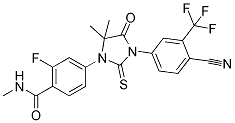The blockade of KDR expression with an anti-RAGE mAb provided additional evidences of the S100A4 mechanism of action. At this point we considered that other factors could contribute to the potentiation elicited by S100A4 on VEGF-induced migration. Specifically, the ERK 1/2/NF-kB pathway has been associated with the regulation of expression of MMPs in several cell types, thus facilitating the degradation of the extracellular matrix. Our work indicates that human S100A4 increases the production and secretion of highly active forms of MMP-9, suggesting a relationship between MMPs activation and the migratory effect of S100A4. Other authors using an osteosarcoma cell line or chondrocytes observed a correlation between S100A4 and MMP activation. Therefore, S100A4 could participate in controlling basal membrane degradation of EC and in the destruction of the ECM to facilitate the invasion of tumor cells. This fact opens a mechanistic explanation for extracellular S100A4 in which the increase on VEGF-induced migration in HUVEC promoted by S100A4 would rely on a combined action of an increase in KDR and the activation of MMPs through a signaling pathway initiated by RAGE. To extend the knowledge regarding the inhibitory capacity of 5C3 mAb on the in vitro activity of the extracellular S100A4 protein, we chose two different steps in its signaling pathway, the molecular interaction with RAGE and the production of active forms of MMP-9. In both cases we noted a blockade of S100A4 activity, suggesting the potential therapeutic role of our antibody. There is a growing body of evidence that S100A4, like others members of the S100 family, may play an important role in tumor angiogenesis, tumor growth and cancer metastasis. We further sought to determine whether S100A4 has a critical role in some animal tumor models. Accordingly, we observed that S100A4 genetic transfer to a melanoma cell line induced a significant increase on tumor growth compared to its counterpart when cells were injected subcutaneously in athymic mice, while no differences were observed in cell proliferation. Tumor angiogenesis analysis from these cells showed a dramatic increase in vascularization, phenomenon that could explain the role of secreted S100A4 by tumor cells, therefore increasing in part the measured tumor growth. To further determine the hypothesis that this effect was due in part by the presence of extracellular S100A4, we treated animals bearing tumors from cells overexpressing S100A4 with the 5C3 monoclonal antibody, obtaining a remarkable reduction in tumor growth and tumor angiogenesis, thus indicating the importance of S100A4 on tumor development and confirming that therapies using antibodies against S100A4 can be promising strategies to treat cancer. In this line of in vivo evidences, we observed that the stable silencing of S100A4 with shRNA in MiaPACA-2 cells dramatically inhibited the tumor growth. This demonstrates on the one hand the important role of S100A4 on tumor development and on the other hand that silencing is more specific than Labetalol hydrochloride overexpression for determining the role of a factor in cell biology because the problems associated  with overexpression are avoided. Moreover, the depletion of S100A4 by shRNA, which knocks down intracellular and extracellular expression, demonstrates the prominent role of the tumor cell in the crosstalk between tumor and stromal cells. Thus, these results suggest that in a therapeutic approach, it will be desirable to combine inhibitors for the intracellular and extracelluar S100A4 activity. Next we wanted to test the effectiveness of 5C3 mAb in blocking the extracellular role of S100A4 in MiaPACA-2 cells. Our Mepiroxol findings indicated that 5C3 regressed tumor vasculature and inhibited in part tumor growth.
with overexpression are avoided. Moreover, the depletion of S100A4 by shRNA, which knocks down intracellular and extracellular expression, demonstrates the prominent role of the tumor cell in the crosstalk between tumor and stromal cells. Thus, these results suggest that in a therapeutic approach, it will be desirable to combine inhibitors for the intracellular and extracelluar S100A4 activity. Next we wanted to test the effectiveness of 5C3 mAb in blocking the extracellular role of S100A4 in MiaPACA-2 cells. Our Mepiroxol findings indicated that 5C3 regressed tumor vasculature and inhibited in part tumor growth.